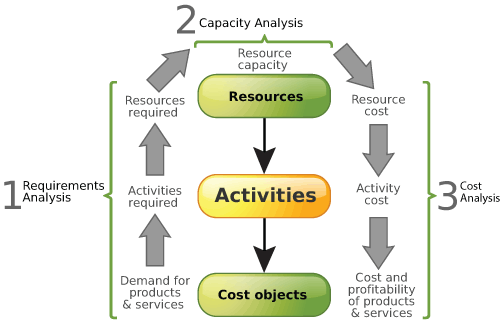Driver-based budgeting and planning (DBBP)
DECIMAL Expert
Are you constantly revising your budget forecasting? Are you having issues decoding your crystal ball? Did you think about adopting an approach where simple performance indicators could do the trick? Driver-based budgeting and planning (DBBP) can help you with a more agile and efficient cost planning and control process.
One of the most important challenges faced by managers is to deliver more with less; the famous 1-2-3 rule: with the same resources, do twice as much in one third of the time. This trend is based on the fact that we are constantly challenged by the competition, demographic and economic changes, unexpected requests etc. herefore it is very difficult to predict what our needs will be in the future.
The DBBP concept enables the managers to simplify their management tasks by gathering operational information while still providing a clear understanding of the financial impact from changes made It’s actually the concept of flexible budget which allows comparison of actual results with budget, but revised according to the actual volumetric data.
More specifically, the DBBP concept enables grouping of costs with similar correlation factors to allow managers to:
- Anticipate the costs variances;
- Plan - in the short-and medium-term - the costs linked to the operations;
- Explain easily all gaps between the budget and actual results.
How can you reach these benefits using the Decimal Suite? The Decimal Suite is the result of over 20 years of operational & financial research integrated in a single software solution. Since its early days, DECIMAL always cared about simplifying and optimizing the ability to explain costs’ behavior. To achieve this, our research team, a mix of professional accountants and IT, has developed methods and approaches to better correlate the relationship between the costs of the organization with volumetric data.
Therefore, in a context where managers want to understand how costs react in specific situations, all that needs to be done is to simply combine all homogeneous costs together and associate them with related volumetric data; volumetric data being also known as cost inducters.
With this correlation between costs and volume measurements, managers can quickly have access to the following critical management information:
- Unit cost of the cost inducter
- Tools to quickly build scenarios
As an example, let’s use a call center in a services business. Within this service, a lot of volumetric data exists and each has associated costs, both direct and indirect. This volumetric data could represent your key performance indicators: you would then have your cost drivers. With these cost drivers, you would be able to compare yourself internally and externally. In your scenarios, you would be able to quickly evaluate the cost impact of any change related to volumetric data.
In addition, the software solution allows you to evaluate the capacity of the organization to validate whether the assumptions are realistic or not. In a scenario mode, the capacity becomes very important to avoid being trapped in a non-realistic scenario.

A good budget model is a complex set of data and constraints. But with the right approach, it can be simplified by focusing on the right cost drivers allowing a realistic image of the organization’s costs.
Budgeting Process brochure

